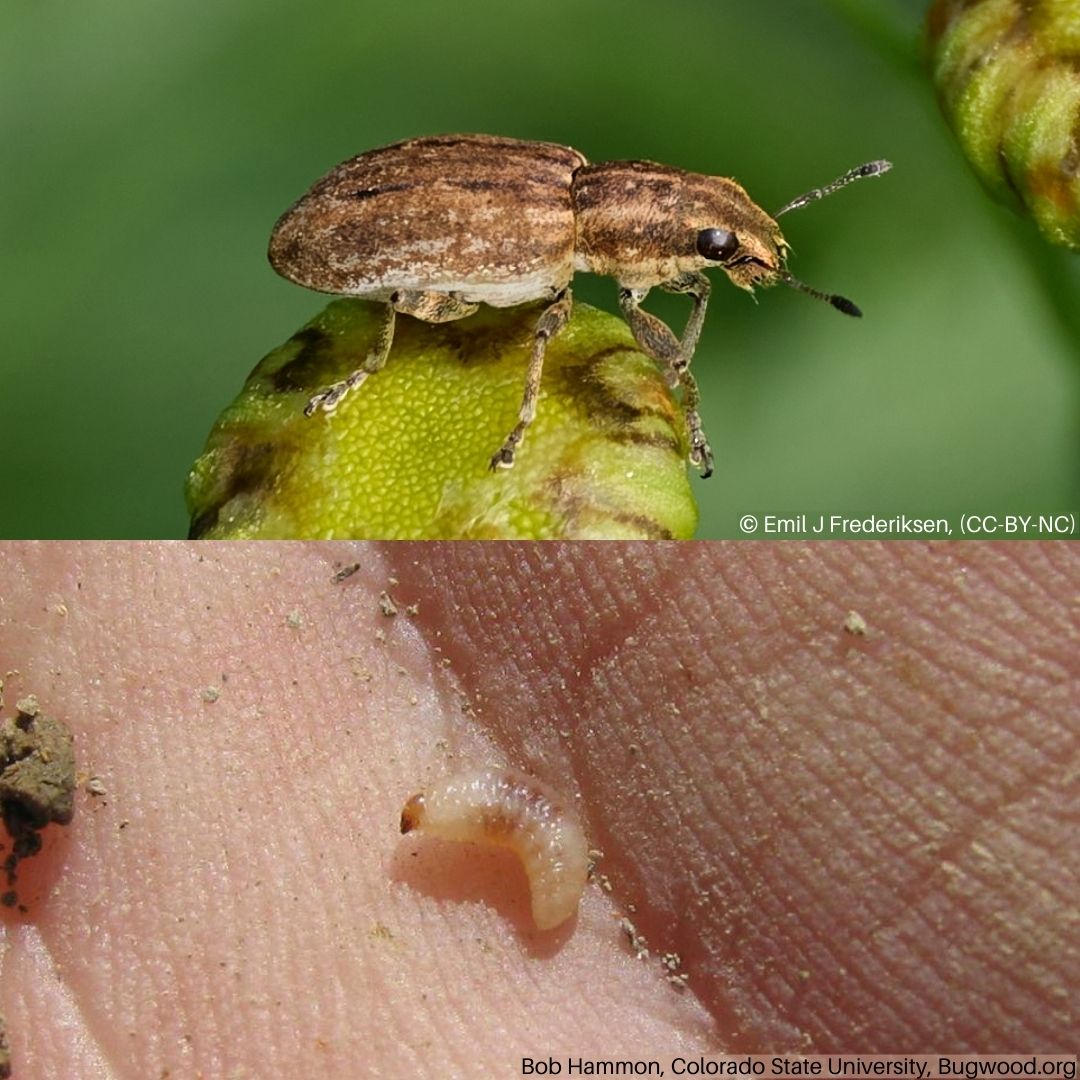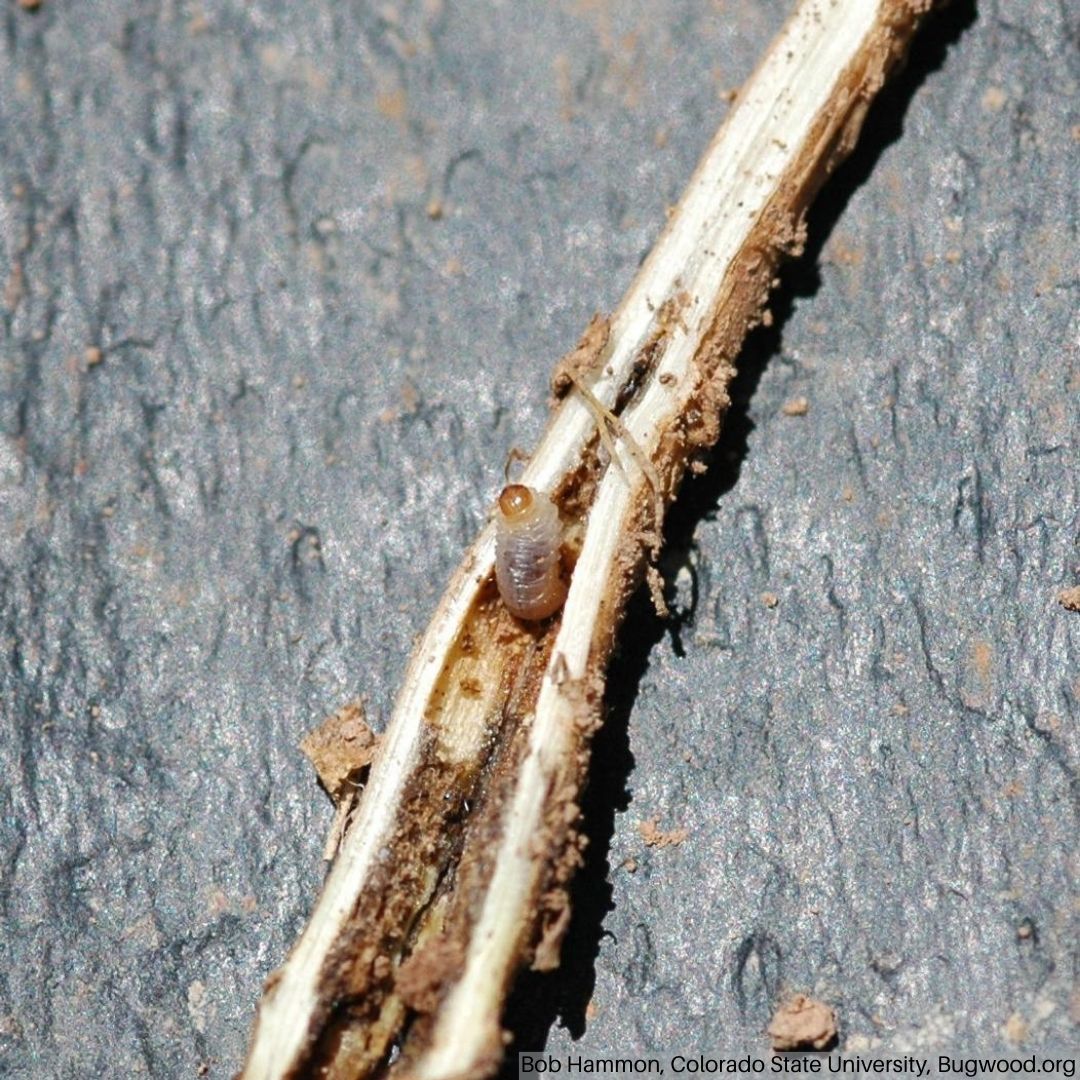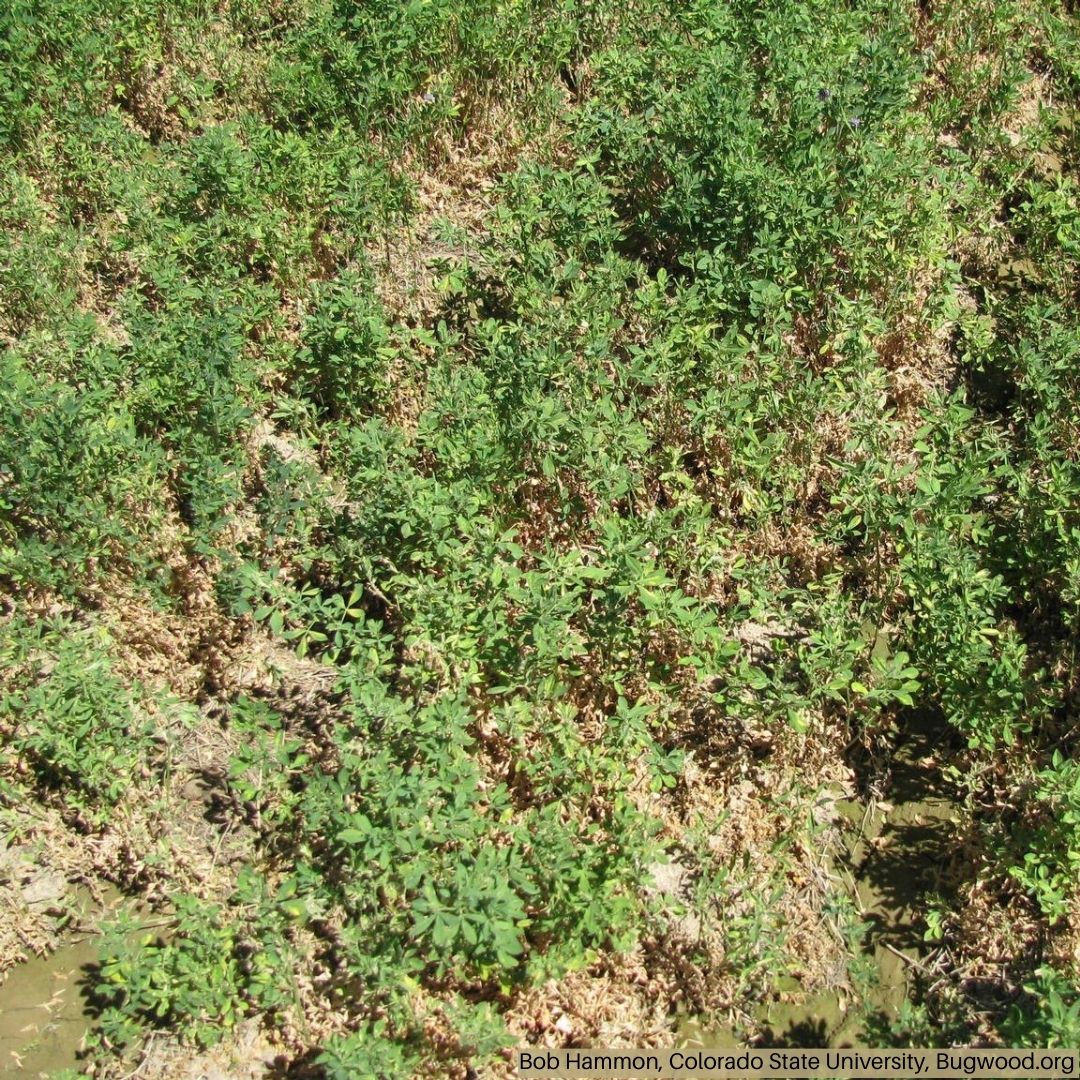Clover Root Curculio
 Clover Root Curculio Adult and Larvae
Clover Root Curculio Adult and Larvae Larvae Feeding on Alfalfa Roots
Larvae Feeding on Alfalfa Roots Larvae and Feeding Damage
Larvae and Feeding Damage Foliar Symptoms of Curculio Feeding
Foliar Symptoms of Curculio FeedingHOSTS
- Alfalfa
- Clover
OVERVIEW
The clover root curculio (Sitona hispidulus) belongs to the weevil family Curculionidae. While adults and larvae can feed on crops, the larval stage is more damaging.DESCRIPTION
Clover root curculio adults are small, reaching only about 3/20 inches (4 mm) long. Their elytra (wing coverings) are brown with black, white, and gray stripes and spots and covered in semi-erect hairs. Larvae are white with light brown head caps.
BIOLOGY
Egg | Larva | Pupa | Adult
Clover root curculio can overwinter as adults or as eggs. Adults will emerge after overwintering to lay eggs on the soil surface, usually near the base of plants. After hatching, larvae will feed on plant roots until ready to pupate. Pupation occurs in the soil. Adults will feed on leaves until mid-late summer when they will hide in leaf debris or other protected places for a period of dormancy. They will become active again when the weather cools, emerging to feed, mate, and lay eggs. Adults can overwinter in the soil or a protected place.
SYMPTOMS
Larvae feed on and tunnel through plant roots often damaging the vascular tissue of the plant and causing scarring. This will reduce the plant’s ability to transport nutrients and water. In cases with severe damage, larvae can girdle the plant. Injured plants have reduced vigor and are more susceptible to stress and infection.
Adults will feed on plant foliage, leaving semi-circular holes in the leaf edges. However, damage from adult feeding is usually not significant.
GENERAL MANAGEMENT
- Rotating legumes with non-susceptible crops will disrupt curculio populations.
INSECTICIDES
Coming Soon

